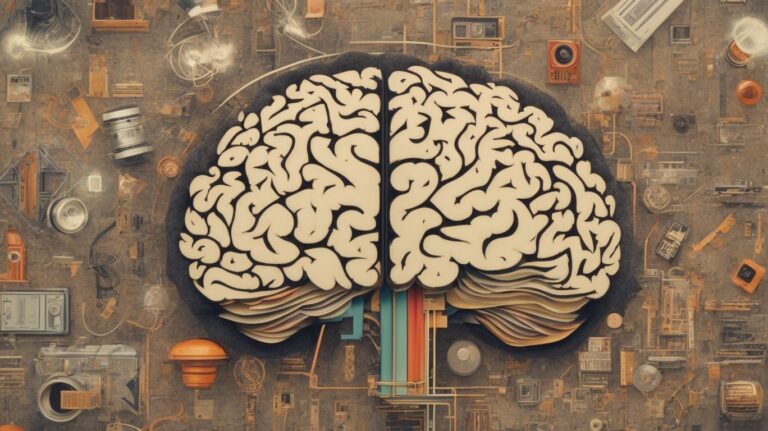Asynchrony in psychology is a fascinating and complex topic that encompasses a wide range of factors, from its history and causes to its impact on human development and how it is measured and assessed. This article will delve into the early studies on asynchrony, the development of theories, and modern research on the subject.
We will also explore the biological and environmental factors that contribute to asynchrony, as well as its effects on physical, cognitive, and socioemotional development.
We will discuss the various methods used to measure and assess asynchrony, as well as the treatment and management options available. Join us as we unravel the intricacies of asynchrony in psychology.
Contents
- 1 Key Takeaways:
- 2 What is Asynchrony?
- 3 The History of Asynchrony in Psychology
- 4 What Causes Asynchrony?
- 5 The Impact of Asynchrony on Human Development
- 6 How is Asynchrony Measured and Assessed?
- 7 Treatment and Management of Asynchrony
- 8 Frequently Asked Questions
- 8.1 What is asynchrony in psychology?
- 8.2 How does asynchrony manifest in human behavior?
- 8.3 What factors contribute to the development of asynchrony in individuals?
- 8.4 Can asynchrony be beneficial?
- 8.5 How can exploring asynchrony in psychology help in understanding relationships?
- 8.6 Are there any treatments for asynchrony in psychology?
Key Takeaways:
- Asynchrony refers to the lack of synchronization between different aspects of human development, such as physical, cognitive, and socioemotional development.
- Early studies on asynchrony focused on the impact of biological and environmental factors, while modern research explores the complex interplay between these factors.
- Asynchrony can have a significant impact on human development and may require interventions such as therapy, medication, and lifestyle changes for management.
What is Asynchrony?
Asynchrony in child development refers to the uneven and atypical growth patterns observed in gifted children, wherein their cognitive, emotional, and social abilities do not progress uniformly.
These children may exhibit advanced cognitive abilities in areas such as problem-solving, memory, or comprehension, while simultaneously facing challenges in handling their intense emotional intelligence and interacting with peers.
This asynchrony can create unique dynamics in their development, as they may struggle to find peers who can relate to their interests or level of understanding, leading to potential feelings of isolation and loneliness.
Their advanced cognitive abilities may impact their emotional development, as they grapple with processing complex emotions at a level beyond their chronological age.
As a result, it’s crucial for parents and educators to provide the necessary support and understanding to encourage balanced growth across all dimensions of development.
The History of Asynchrony in Psychology
The exploration of asynchrony in psychology dates back to seminal works such as the Columbus Group’s 1991 publication, which introduced the concept as a defining characteristic of gifted individuals’ psychological patterns.
Building upon the insights from the Columbus Group, early contributors in psychology further delved into the historical significance of asynchrony, particularly in the context of child development and cognitive dissonance.
These foundational research efforts laid the groundwork for understanding how individuals may exhibit advanced cognitive abilities in certain areas while experiencing developmental discrepancies in others.
The acknowledgment of asynchrony revolutionized the perception of giftedness, advocating for the consideration of psychological complexity and diversification beyond mere intellectual aptitude.
This concept underlines the importance of recognizing individual differences in psychological profiles, paving the way for a more nuanced and comprehensive approach to understanding human cognition and behavior.
Early Studies on Asynchrony
Early studies on asynchrony in child development focused on understanding the unique cognitive and emotional traits of gifted children, leading to the formulation of several influential theories and research frameworks.
One of the significant theories that emerged from these studies is the ‘Overexcitabilities Theory,’ which suggests that gifted children experience heightened sensitivities in various domains such as emotional, intellectual, and psychomotor.
This theory emphasizes the intense inner experiences of gifted individuals, highlighting their increased susceptibility to stimuli and emotional responses.
Research has shown that gifted children often display advanced cognitive abilities in specific domains, such as exceptional memory, rapid learning, and divergent thinking.
This cognitive asynchrony, where advanced intellectual capabilities coexist with typical emotional development, has profound implications for their social and emotional well-being.
Development of Theories on Asynchrony
The development of theories on asynchrony involved the examination of gifted children’s cognitive abilities and the interplay between their intellectual potential and social-emotional development, shaping contemporary understandings of giftedness.
The evolving interpretations of asynchrony in gifted children have highlighted the intricate relationship between cognitive abilities and emotional intelligence.
Early theories focused on the exceptional cognitive prowess of gifted individuals, often overlooking the potential impact on their social-emotional development.
Over time, a more comprehensive understanding has emerged, emphasizing the nuanced nature of asynchrony and the need for a holistic approach to nurturing the gifted.
This integrated perspective underscores the significance of addressing the unique social-emotional needs of these individuals, in addition to recognizing their remarkable cognitive abilities.
Modern Research on Asynchrony
Modern research on asynchrony in child development delves into the nuanced impacts of educational environments and mentor interactions on the cognitive and socioemotional growth of gifted individuals, contributing to a more comprehensive understanding of their needs.
Studies have indicated that the educational environment plays a pivotal role in nurturing the talents of gifted children. A supportive and stimulating environment not only encourages their intellectual curiosity but also fosters their creativity and critical thinking abilities.
The presence of a knowledgeable mentor can greatly enhance their development, providing guidance and support that aligns with their advanced cognitive abilities and emotional sensitivities.
Research has shown that positive interactions with mentors create a conducive atmosphere for the growth of gifted children, helping them navigate the challenges associated with their exceptional abilities while maintaining a healthy social and emotional balance.
Consequently, understanding the dynamics of these interactions and their influence on the holistic development of gifted individuals is imperative for designing effective educational programs and support systems tailored to their specific needs.
What Causes Asynchrony?
The asynchrony observed in gifted children stems from a complex interplay of biological and environmental factors, shaping their unique developmental trajectories and cognitive-emotional profiles.
This interplay begins with biological differences, such as accelerated cognitive abilities paired with emotional depth, which can lead to heightened sensitivity and intensified experiences.
Environmental influences, including educational experiences and social interactions, further shape these complexities, impacting how these children express their exceptional abilities and cope with challenges.
Biological Factors
Biological factors contributing to asynchrony in gifted children encompass nuanced cognitive dissonance, reflecting the intricate interconnections between their neurological development and cognitive abilities.
Developing a comprehensive understanding of asynchrony in gifted children involves looking into the intricate workings of their brains.
The unique wiring of their neurological system often leads to advanced cognitive abilities in diverse domains, such as problem-solving, creativity, and critical thinking.
Neurologically, their brains exhibit a remarkable level of connectivity and plasticity, facilitating rapid information processing, heightened sensory perception, and exceptional memory retention.
These biological foundations underpin the cognitive dissonance experienced by gifted children, as their mental processes may not align chronologically with their chronological age, resulting in asynchrony that can manifest in various aspects of their development.
Environmental Factors
Environmental factors, including peer relationships and psychological patterns, exert significant influence on the manifestation and management of asynchrony in gifted children, shaping their socioemotional and cognitive experiences.
Peer relationships play a crucial role in the development of asynchrony among gifted children. Positive and supportive peer interactions can enhance their self-esteem and emotional well-being.
Conversely, negative peer experiences may exacerbate feelings of isolation and inadequacy, contributing to emotional distress.
Psychological patterns, such as perfectionism and heightened sensitivity, can intensify the impact of peer relationships, influencing how gifted children perceive and navigate social interactions.
The Impact of Asynchrony on Human Development
Asynchrony in gifted children has profound effects on their physical, cognitive, and socioemotional development, as it intertwines with the educational environment and psychological patterns to shape their behavioral tendencies.
Physical development in gifted children affected by asynchrony often presents unique challenges, with variations in growth patterns and motor skills. This asynchrony can lead to discrepancies where their physical maturation might not align with their intellectual capabilities.
The cognitive impact of asynchrony manifests in advanced abilities in certain areas like problem-solving or memory, while other domains may lag behind, requiring tailored educational approaches to support their overall cognitive development.
The socioemotional implications of asynchrony can result in engaging with peers who are at different developmental stages, leading to potential social barriers and emotional complexities that necessitate understanding and support from educators and caregivers.
Effects on Physical Development
Asynchrony in gifted children can lead to unique cognitive dissonance that influences their physical development, manifesting in distinct patterns of motor skills and sensory integration.
This cognitive dissonance arises from the disparity between their intellectual and emotional maturity, causing challenges in coordinating their physical movements and processing sensory information.
As a result, gifted children may exhibit uneven motor development, excelling in certain areas while lagging in others. The impact of asynchrony on sensory integration is particularly profound, as their heightened sensitivity can lead to sensory overload or avoidance behaviors, affecting their ability to adapt to their surroundings and engage in various physical activities.
Effects on Cognitive Development
The asynchrony experienced by gifted children significantly shapes their cognitive development, with the educational environment and mentor interactions playing pivotal roles in nurturing their intellectual potential and academic growth.
Gifted children often experience cognitive asynchrony, where their cognitive, emotional, and physical development unfold at varying rates. This asynchrony can lead to unique challenges in the educational setting, with students potentially being advanced in certain subjects while still developing in others.
The educational environment thus plays a crucial role in providing personalized, challenging, and supportive learning opportunities that cater to the specific needs of these gifted individuals.
Mentor interactions also have a profound impact on the cognitive development of gifted children. Positive mentorship can inspire and guide them to channel their intellectual potential effectively, fostering a sense of curiosity, critical thinking, and deep engagement with their areas of interest.
This personalized guidance contributes significantly to their academic growth and overall well-being, nurturing their abilities and providing a supportive framework for their intellectual journey.
Effects on Socioemotional Development
Asynchrony profoundly impacts the socioemotional development of gifted children, influencing their peer relationships and psychological patterns, which in turn shape their social adaptation and emotional well-being.
This discrepancy between a child’s intellectual abilities and their social and emotional development can lead to challenges in forming meaningful peer relationships.
Gifted children may struggle to find peers who can relate to them on an intellectual and emotional level, potentially leading to feelings of isolation and loneliness. Their advanced cognitive abilities may exacerbate these challenges, as they are often more aware of social dynamics and may struggle to fit in with their age peers.
How is Asynchrony Measured and Assessed?
The measurement and assessment of asynchrony in gifted children involve the utilization of standardized tests, observational methods, and self-report measures to gauge their cognitive abilities and emotional intelligence across different domains.
Standardized tests are often used to assess various cognitive abilities, such as analytical thinking, problem-solving, and verbal or non-verbal reasoning. These assessments provide valuable insights into the child’s intellectual potential and processing speed.
On the other hand, observational methods, including structured observations and behavioral assessments, offer a more holistic view of the child’s behavior and emotional regulation, helping to identify potential areas of asynchrony.
Self-report measures, such as questionnaires and interviews, enable gifted children to express their thoughts, feelings, and perceptions, which can provide valuable insights into their emotional intelligence and social-emotional functioning.
Standardized Tests
Standardized tests form a fundamental component of assessing asynchrony in gifted children, providing measurable insights into their cognitive and emotional profiles, as evidenced by influential works such as those indexed by ERIC Number and ISSN-0278-3193.
These tests play a crucial role in identifying the exceptional and sometimes disparate abilities of gifted children. They uncover variations in their development and intellectual capabilities, examining their performance across diverse domains such as language, mathematics, and reasoning.
This allows educators and professionals to gain a comprehensive understanding of a gifted child’s strengths and areas for further development.
Observational Methods
Observational methods play a crucial role in assessing asynchrony, as they capture the dynamic interplay between the child’s development, the educational environment, and mentor interactions, offering valuable insights into their cognitive and socioemotional functioning.
These methods allow researchers and educators to observe and analyze children’s behaviors, interactions, and responses in real-life settings, providing a holistic view of their everyday experiences.
By closely studying the nuances of children’s engagement in educational activities, observational methods also shed light on the impact of learning environments on their development, social behaviors, and emotional regulation, enabling a comprehensive understanding of their multifaceted journey.
These methods yield nuanced perceptions into the quality of mentor-child relationships, uncovering the reciprocal influences and the role of mentors in scaffolding cognitive processes and socioemotional growth.
This holistic assessment, derived from observing real-time interactions, enriches educational practices, fostering environments that support each child’s unique developmental trajectory.
Self-Report Measures
Self-report measures serve as valuable tools for evaluating asynchrony in gifted children, as they provide direct insights into their emotional intelligence, social support needs, and coping strategies, contributing to a holistic understanding of their developmental dynamics.
Through self-report measures, gifted children can effectively express their emotional experiences, reflections, and self-perceptions, shedding light on their unique emotional intelligence.
This allows for a deeper comprehension of the complexities inherent in their emotional development and the varying degrees of emotional maturity across different domains.
In addition, these measures offer valuable insights into the social support needs of gifted children, capturing their desires for meaningful connections, understanding, and encouragement from peers, educators, and family members.
Such information is crucial for identifying areas of potential support and fostering environments that cater to their specific social-emotional requirements.
Self-report measures enable an exploration of the diverse coping strategies employed by gifted children in response to challenges and stressors.
Understanding their individual approaches to managing difficulties provides a comprehensive view of their resilience, adaptive skills, and potential areas for targeted interventions to enhance their coping mechanisms.
Treatment and Management of Asynchrony
The treatment and management of asynchrony in gifted children require a multifaceted approach that addresses their educational, cognitive, and socioemotional challenges, leveraging their strengths to overcome weaknesses and foster holistic development.
One essential strategy is to provide differentiated education that accommodates the varying pace and depth of learning. This can involve personalized learning plans, subject acceleration, or enrichment activities to keep these children engaged.
Addressing their cognitive challenges may involve fostering metacognition, executive functioning skills, and offering mentorship from intellectual peers. It’s crucial to support their socioemotional needs through social-emotional learning programs, counseling, and creating a nurturing environment that understands and values their unique experiences.
Identifying and building on their strengths and interests can significantly enhance their self-esteem and motivation, contributing to overall well-being.
Therapy and Counseling
Therapy and counseling play a vital role in the treatment of asynchrony, as they focus on nurturing the emotional intelligence and cognitive abilities of gifted children, aiding them in navigating the complexities of their developmental journey.
These therapeutic approaches provide a safe space for children to explore their unique cognitive and emotional landscape, allowing them to understand and express their thoughts and feelings in a supportive environment.
By fostering self-awareness and empathy, therapy and counseling help gifted children cope with the challenges of asynchrony, such as reconciling advanced intellectual abilities with typical emotional development.
The integration of tailored techniques and interventions in therapy sessions addresses the specific needs of gifted children, guiding them to develop essential emotional intelligence skills and coping strategies.
This proactive approach not only supports their current well-being but also equips them with valuable tools for lifelong emotional regulation and social interaction.
Medications
In some cases, medications may be considered as part of the management of asynchrony, particularly for addressing cognitive dissonance and supporting emotional intelligence in gifted children, under the guidance of specialized professionals.
When considering the role of medications in managing asynchrony, it’s vital to recognize that each gifted individual’s needs are unique, and their response to medication can vary significantly.
Therefore, the use of medications in addressing cognitive dissonance and emotional intelligence should be carefully tailored by experienced professionals, taking into account the child’s specific circumstances, medical history, and potential interactions with other treatments or therapies.
The discussion around the use of medications should always involve a multi-disciplinary approach, integrating perspectives from mental health professionals, educators, and parents or guardians.
Collaboration among these stakeholders is crucial in ensuring that the medications chosen align with the child’s overall well-being, academic goals, and social-emotional development.
Lifestyle Changes
Implementing lifestyle changes involves creating a supportive community and fostering mentor interactions, which are instrumental in mitigating the impact of asynchrony and enhancing the holistic development of gifted children through positive social and educational environments.
By establishing a supportive community for gifted children, they can find like-minded peers and individuals who understand their unique needs, providing a sense of belonging and understanding.
These connections not only alleviate the feelings of isolation but also encourage the exchange of experiences and coping strategies, contributing to their emotional well-being.
Fostering mentor interactions allows gifted children to learn from experienced individuals, enableing them with guidance, skills, and broader perspectives essential for their educational and personal growth.
Frequently Asked Questions
What is asynchrony in psychology?
Asynchrony in psychology refers to the mismatch or lack of coordination between different mental or behavioral processes. It can occur in various contexts, such as in relationships, communication, and cognitive functioning.
How does asynchrony manifest in human behavior?
Asynchrony can manifest in human behavior in various ways, such as a mismatch in verbal and nonverbal communication, a disconnect between thoughts and actions, or a discrepancy between expressed emotions and inner feelings.
What factors contribute to the development of asynchrony in individuals?
Several factors can contribute to the development of asynchrony in individuals, including neurological differences, past experiences, attachment styles, and environmental influences.
Can asynchrony be beneficial?
While asynchrony is often associated with negative outcomes, it can also have some benefits. For example, it can lead to increased creativity and innovation in problem-solving and decision-making processes.
How can exploring asynchrony in psychology help in understanding relationships?
Exploring asynchrony in psychology can provide insights into the dynamics of relationships and help individuals understand the root causes of conflicts and miscommunications. It can also aid in developing effective communication and conflict resolution skills.
Are there any treatments for asynchrony in psychology?
There is no specific treatment for asynchrony in psychology, as it is a complex phenomenon with various underlying causes. However, therapy and other interventions can help individuals identify and address the underlying issues contributing to asynchrony and learn coping strategies.




